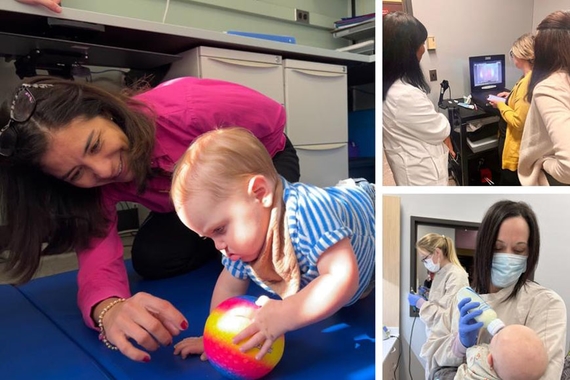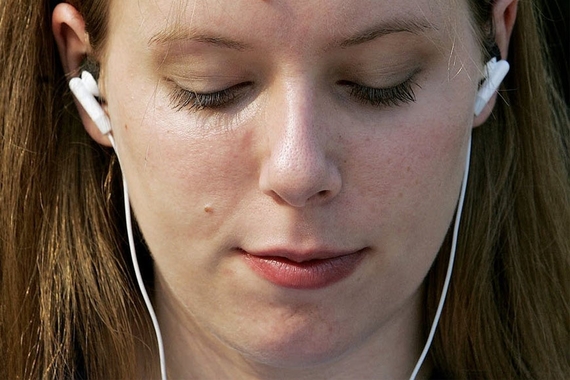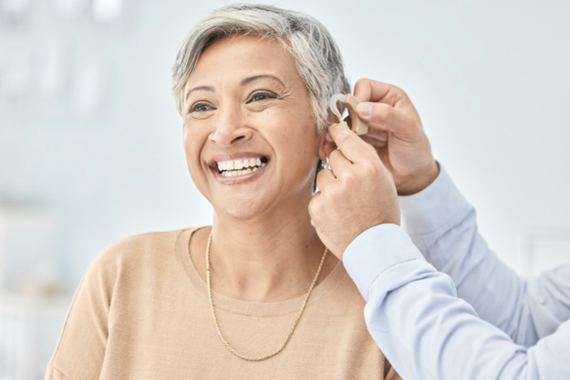Does What We See Affect How We Hear?
Almost every waking moment of every day, humans are in constant communication with one another. Naturally, the language that a person speaks has an impact on how others understand them. But can the way a person looks have an impact on how well other people understand what they say? This opens a conversation of linguistic dichotomies.
Professor Ben Munson and Dr. Alayo Tripp are interested in linguistic issues and the misunderstanding between racial groups who speak the same language, particularly those between hearing-impaired older individuals and the people around them, including health-care workers and caregivers. They are especially interested in whether simply listening to someone of a different race or ethnicity than one’s own adds an additional challenge to speech communication.
Munson and Tripp are embarking on a two-year research project to examine the impact that these race-based social groupings have on spoken language understanding.
Developing an Idea
Munson, chair of the Department of Speech-Language-Hearing Sciences and a full-time professor, has been interested in the ways language manifests itself since the time he was young. Growing up in a multiracial, multilingual, multidialectal city, he has “always been especially interested in the specific issue of how race and ethnicity manifest themselves in patterns of spoken language. This is a topic that is of vast importance: communication failures that happen across lines of race and ethnicity are persistent and long-standing,” Munson explains.
As the principal investigator of the project, Munson was thrilled to receive a grant from the National Institute of Health in order to move forward with this much-needed research topic. “I realized as I am staring at the nose of being 50 years old and as I’ve been here at the U 20 years. It’s time for me to do things of greater importance to the world, and this project is an opportunity for that,” he says.
Tripp, Munson’s research partner, recently joined the University of Minnesota specifically for this project. Having just received their PhD in linguistics at the University of Maryland, College Park, Tripp is passionate about navigating linguistic landscapes and stereotypes within a single language.
Conducting past research on the ability of children and infants to understand linguistic diversity within their learned language, Tripp is prepared to now study the opposite end of the lifespan. “It's good to be able to tell a comprehensive story about how perception of language variation develops throughout the whole lifespan. So how does variation in experience influence actually learning to recognize variation in speech as socially meaningful? And how does that change as [individuals] get older?” Tripp says.
Research in Practice
At a bird’s-eye view, Tripp and Munson’s research is looking at something seemingly as objective as how easily individuals can understand each other.
“It’s how I hear you say one word or another word, or I hear you say one sound or another sound. If the two people say the same sequence of sounds, I might hear it as coal if the person is white but cold if the person is Black, because I know that some Black people speak African American English, where the normal pronunciation of the word cold is similar to how people who speak other dialects say the word coal,” Munson explains. “If I just assume that a Black person speaks African American English, then I might misperceive what a person of color says. If I don’t know anything about African American English, I might have a hard time understanding someone who uses that variety of English.”
A large proportion of older adults suffer from hearing loss and report difficulty understanding speech, which can lead to broader behavioral and physical health problems. With changing US demographics, older white adults who need care and services are more commonly needing to communicate with the younger people who provide that care and those services, many of whom are people of color. In their project, Munson and Tripp are exploring whether race-based biases on speech perception influence how easily speech is understood between the age groups.
During this first year of research, Munson and Tripp are determining the right people to participate in the study and building what will be a public database of audio-visual speech produced by 50 individuals, 25 men and 25 women, from five race categories.
After the recorded sentences are gathered, year two will consist of studying as many people as possible in two groups: older adults with and without hearing impairment, and racially diverse young people. They will determine sentence intelligibility, or how easily a sentence can be understood and repeated back.
For all cases, they will measure the results of audio-only listening as well as combined audio and visual listening to determine tangible results of whether knowing the race of an individual can change how someone understands them. “We’re interested in why it is that you have a specific belief that someone should speak a particular way,” explains Munson.
Leaning into Scientific Discovery
Tripp and Munson are adamant about extending outside the “normal” study pools for language research and creating a diversified study to deepen the understanding of every human and their ability to understand across race, ethnicities, genders, and social classes. The concept they are studying is often swept under the rug as “known,” when in reality it’s rarely fully understood.
Munson says, “Academically, let’s actually talk about what we can do to make everybody understand everybody better, and let’s elevate the science so that these conversations aren’t just the diversity conversation, but they are the conversations that are at the table when people are doing cutting-edge science. Because this is cutting-edge science.”
This story was written by an undergraduate student in CLAgency. Meet the team.



